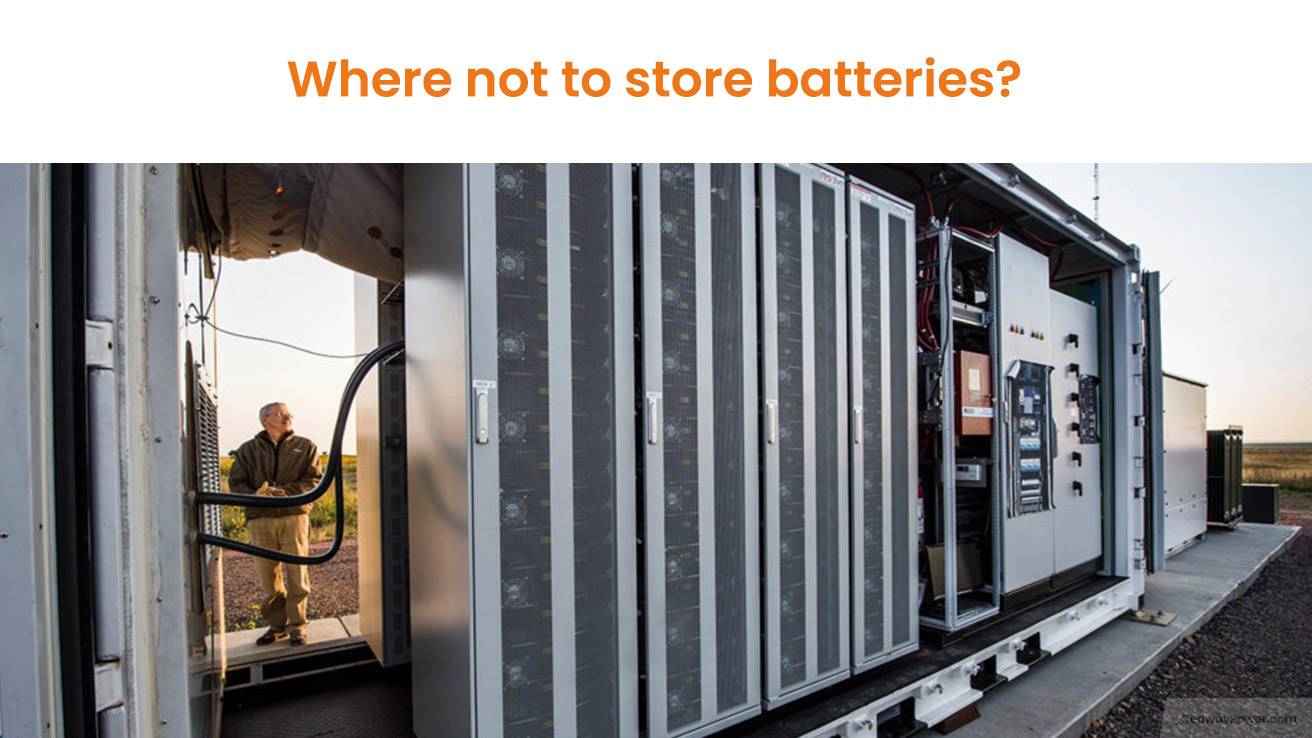Welcome to our blog, where we tackle the crucial topic of proper battery storage. Despite their small size, batteries need careful handling. This article debunks storage myths, highlighting potential risks and emphasizing the importance of safe battery practices. So, let’s explore the essentials for secure battery handling!
Common misconceptions about battery storage
Dispelling common misconceptions about battery storage is crucial for optimal performance and safety. Let’s address some prevalent myths:
- One-Size-Fits-All Storage:
- Myth: All batteries can be stored anywhere without specific requirements.
- Reality: Different battery types have distinct storage needs; neglecting them can lead to reduced performance or safety hazards.
- Temperature Tolerance:
- Myth: Extreme temperatures don’t affect battery performance.
- Reality: Exposure to excessive heat or cold can cause leakage or faster discharge; storing batteries in a cool, stable place is essential.
- Proximity to Flammable Materials:
- Myth: Storing batteries near flammable items is safe.
- Reality: Leaking battery acid can react with flammable substances, posing fire or explosion risks. Always keep batteries away from anything flammable.
- Moisture and Humidity:
- Myth: A little moisture won’t harm batteries.
- Reality: High humidity can corrode terminals and damage internal components. Proper storage in a designated container or organizer is crucial to prevent such issues.
By debunking these myths and emphasizing responsible storage practices, we can ensure the longevity and safety of our devices powered by batteries.
The dangers of storing batteries in extreme temperatures

Understanding the dangers of storing batteries in extreme temperatures is essential for maintaining their performance and safety. Let’s break down the risks:
- High Temperatures:
- Risk: Leaving batteries in hot environments affects internal chemistry, leading to reduced performance, leakage, or rupture.
- Solution: Avoid exposing batteries to excessive heat, such as inside cars or near heat sources, and opt for cool, dry storage.
- Low Temperatures:
- Risk: Extremely cold conditions can diminish a battery’s ability to hold a charge effectively.
- Solution: Store batteries in moderate temperatures to prevent loss of charge capacity caused by freezing conditions.
- Thermal Runaway Hazard:
- Risk: Extreme temperatures increase the risk of thermal runaway – an uncontrolled temperature increase in the battery, posing safety hazards and shortening lifespan.
- Solution: Choose storage locations with moderate temperatures to mitigate the risk of thermal runaway and ensure prolonged battery life.
By being mindful of temperature conditions and adopting proper storage practices, you can safeguard your batteries from potential dangers and optimize their longevity.
Avoid storing batteries near flammable materials or liquids
Ensuring safe battery storage involves avoiding proximity to flammable materials, a vital rule that is sometimes overlooked. Here’s why:
- Fire and Explosion Risks:
- Risk: Batteries’ chemicals can react with flammable substances, leading to fires or explosions.
- Solution: Store batteries away from gasoline, lighter fluid, or cleaning solvents to prevent potential catastrophic events.
- Toxic Fumes Hazard:
- Risk: Minor battery leaks combined with certain chemicals, like acid from car batteries and gasoline vapors, can produce toxic fumes.
- Solution: Keep batteries in a cool, dry place and use dedicated storage containers to mitigate risks of harmful fumes.
- General Safety Guideline:
- Reminder: Always prioritize safety by storing batteries away from flammable materials and using proper storage containers designed for battery protection.
By adhering to these straightforward guidelines, you significantly enhance safety and reduce the likelihood of accidents related to battery storage in your home or workplace.
The effects of moisture and humidity on batteries

Beware of the harmful effects of moisture and humidity on batteries, as they can lead to corrosion, leakage, and reduced performance. Here’s why you should take precautions:
- Corrosion and Leakage Risks:
- Risk: Exposure to moisture can cause batteries to corrode and leak.
- Solution: Store batteries in dry locations, away from water-prone areas, and use airtight containers or resealable bags for added protection.
- Condensation and Short Circuits:
- Risk: Humidity increases the likelihood of condensation inside battery compartments, leading to short circuits.
- Solution: Keep batteries in locations with controlled humidity levels to prevent internal damage.
- Accelerated Self-Discharge:
- Risk: High humidity speeds up self-discharge, causing batteries to lose their charge more rapidly.
- Solution: Opt for proper storage and avoid damp environments to maintain battery power for longer durations.
By following these simple precautions, you can shield your batteries from the detrimental effects of moisture and humidity, ensuring they stay in optimal condition for extended periods. Remember, proper storage practices are crucial for maximizing battery lifespan and performance.
Safe alternatives for storing batteries at home
Ensure the safety of your home and batteries with these alternatives for storage:
- Battery Storage Cases:
- Advantage: Designed for organization and protection, these cases prevent damage and short-circuiting with separate compartments for various battery sizes.
- Cool, Dry Areas:
- Advantage: Store batteries in closets or drawers to avoid extreme temperatures and humidity, significantly extending their lifespan and preventing leaks.
- Non-Metallic Containers:
- Advantage: Opt for plastic bins or boxes instead of metal containers to prevent electrical conductivity and potential accidents.
- Elevated Surfaces:
- Advantage: Reduce the risk of corrosion or damage by storing batteries on elevated surfaces, minimizing contact with liquids.
- Flammable Material Separation:
- Advantage: Keep batteries away from flammable items like paper towels and household chemicals, preventing potential ignition from heat generated by malfunctioning batteries.
By adopting these safe storage methods, you not only safeguard your surroundings but also ensure the longevity and reliability of your batteries.
Importance of following proper battery storage guidelines
Ensuring the safe storage of batteries is crucial for longevity and safety. Follow these guidelines to protect yourself and your surroundings:
- Mind the Temperature:
- Tip: Avoid extreme temperatures, both hot and cold, as they can cause leaks, explosions, or reduced capacity in batteries.
- Flammable Material Caution:
- Tip: Keep batteries away from flammable items like gasoline or cleaning supplies to prevent potential fire hazards.
- Moisture and Humidity Management:
- Tip: Protect batteries from moisture and humidity to prevent corrosion and internal damage. Keep storage areas dry and away from water sources.
- Invest in Battery Organizers:
- Tip: Consider using specialized battery organizers or cases designed to insulate batteries from temperature fluctuations and accidental damage.
- Follow Manufacturer’s Instructions:
- Tip: Different batteries require specific handling procedures, so always follow the manufacturer’s instructions for proper care.
By adhering to these guidelines and responsible ownership, you can minimize hazards and maximize the lifespan of your batteries. Remember: safety and proper care go hand in hand.

